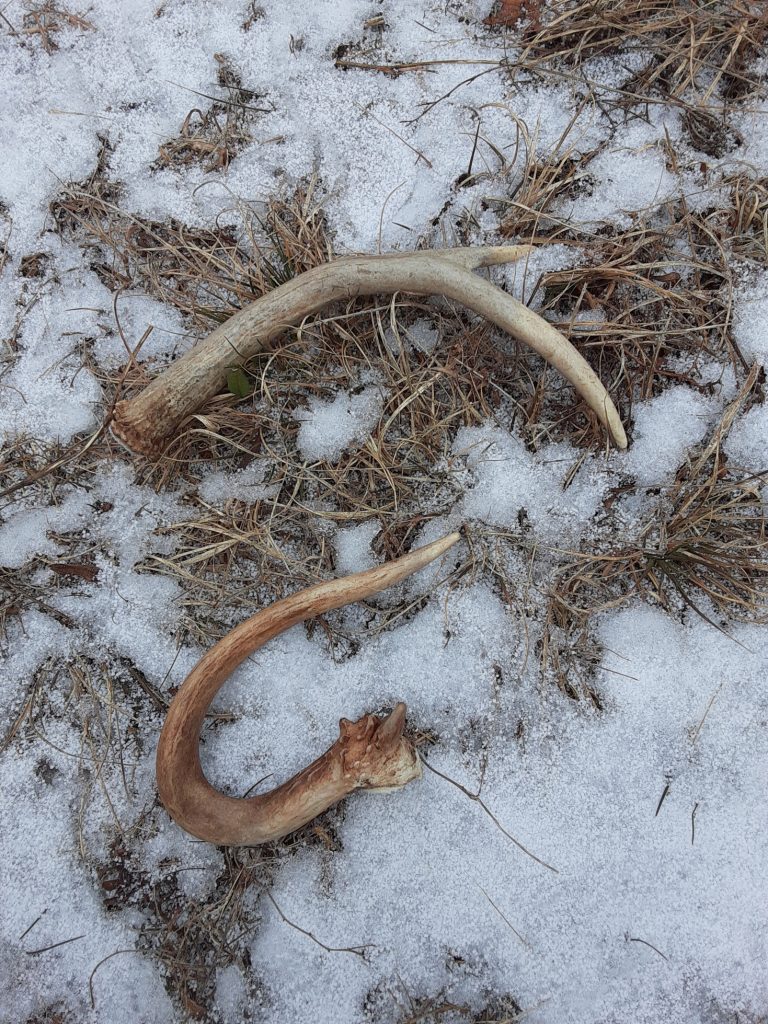Duane recently wrote about Indian cucumber root and the whys of where it grows in Pennsylvania. Granted, plants and soil chemistry aren’t the most engaging topic but we wondered if during our month-long blog-writing hiatus, we had lost our readership.
I get it. I’m not into manganese or Indian cucumber root either. I’m not a soil chemist, a botanist, or a plant ecologist. I’m a biologist. I like the things that breathe and move about. Elements and plants don’t do that.
And it’s always oh so complicated. Why can’t anything ever be simple? I know this may sound odd coming from a biologist who specializes in maybe the most researched wildlife species in North America. Biology is never simple and the more we learn about deer the more complicated it gets.
For example, antlers (Sigh…Yes, I’m going to talk about antlers…again). What is produced atop a buck’s head is a complex dance of age, nutrition, and genetics. Of these, nutrition seems to play that largest role in determining who gets the largest antlers (for a given age). I can’t say I’m surprised. It is the most complex of the three. Age is age – experimentally easy to manipulate and understand. Genetics requires more lab translating and mapping, but they are what they are. We really can’t change genes in the free-roaming population.
That leaves nutrition – protein, energy, and minerals. Researchers have tried to tease these apart but the more we tease, the more strands that appear. Protein is a big player in antler development. Much study has been done varying the protein level in deer diets and measuring the antlers they produced. Science has settled on an average intake of at least 16% protein from spring through fall for optimum antler production.
Energy is another key component. Obviously, it takes a lot of gas to run that bone growing engine. But if protein needs are met, then energy requirements are covered.
The last component is minerals. We know little about mineral requirements for antler growth. Research usually emphasizes the macro elements of calcium and phosphorus as they are the two most common minerals present in antlers. Net daily requirements for both have been established. But given that bucks rob Peter (skeletal bone) to pay Paul (grow antlers) even when these requirements are met is a mystery.
And when it comes to trace elements, we don’t know squat. Potassium, manganese, copper, zinc, iron – all present in antlers. Did I just say manganese?!? Indeed.
As Duane stated previously, it is an essential mineral. It is required for the normal functioning of your brain, nervous system, and many enzyme systems. It is stored in your kidneys, liver, pancreas, and bones. While it is unsafe to inhale, the tolerable upper intake level for adults is 11 mg/day. Good to know!
What we didn’t know until recently was the connection between manganese and bone health. In 2012, a researcher studying antlers (!) hypothesized that manganese is essential for calcium fixation into bones and the loss of manganese could be a factor in osteoporosis. There is still much exploration of this theory that needs to take place but understanding the link between manganese, osteoporosis, and diseases of the brain like Parkinson’s and Alzheimer’s could have a profound effect on human health.
But let’s get back to deer – Indian cucumber root and manganese – where the stakes aren’t quite as high. We do know that soil chemistry and environmental conditions affect manganese content of plants. We know that deer eat those plants. We know that manganese is needed for antler growth.
What we don’t know is why or the role manganese availability plays in said antler growth. So while the relationship between Indian cucumber root and manganese may not excite you, it is likely not the only relationship that exists for this element. Proving again that biology is complicated, much to our dismay (sort of!).
Jeannine Fleegle
Wildlife Biologist
PGC Deer and Elk Section
If you would like to receive email alerts of new blog posts, subscribe here.
And Follow us on Twitter @WTDresearch
